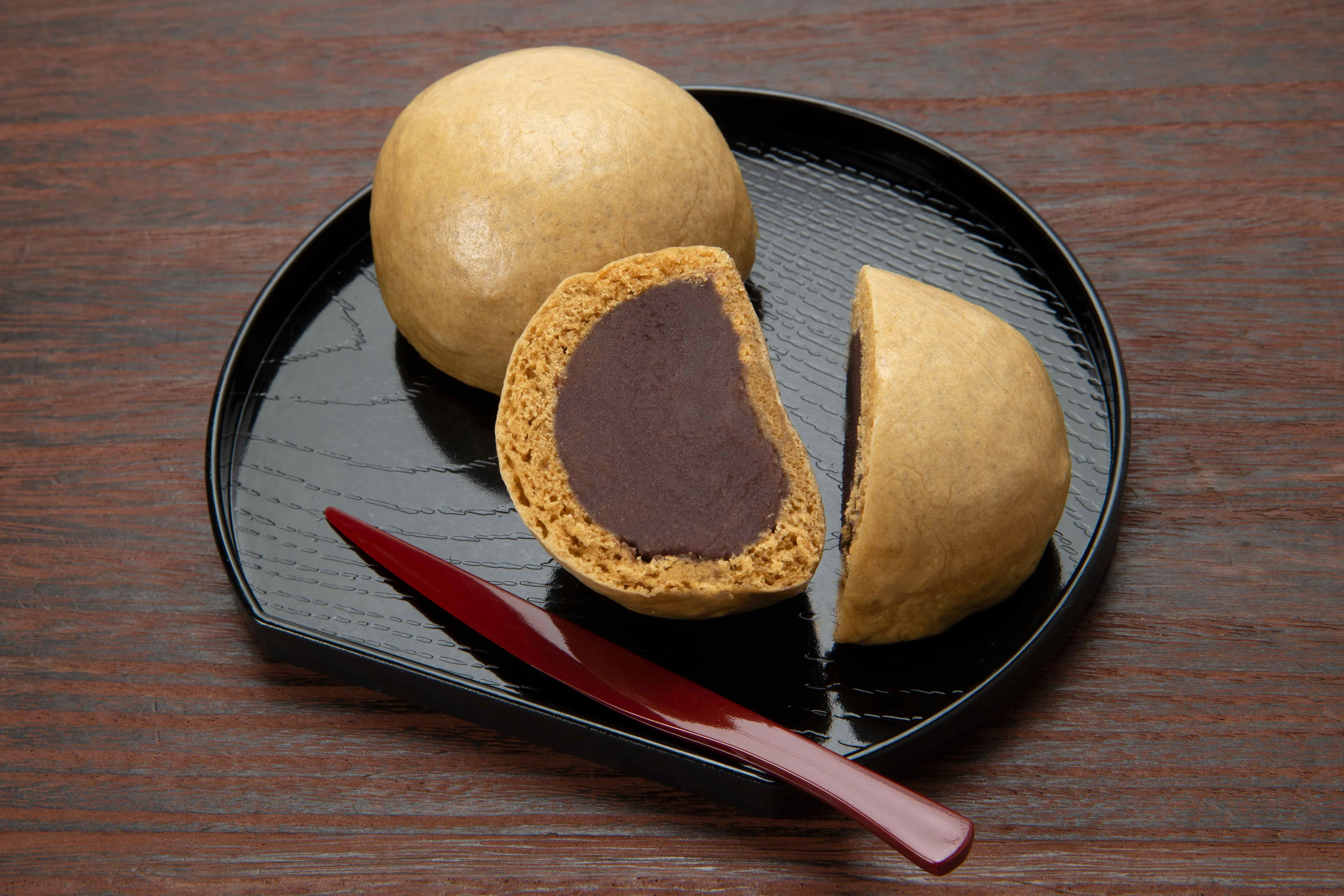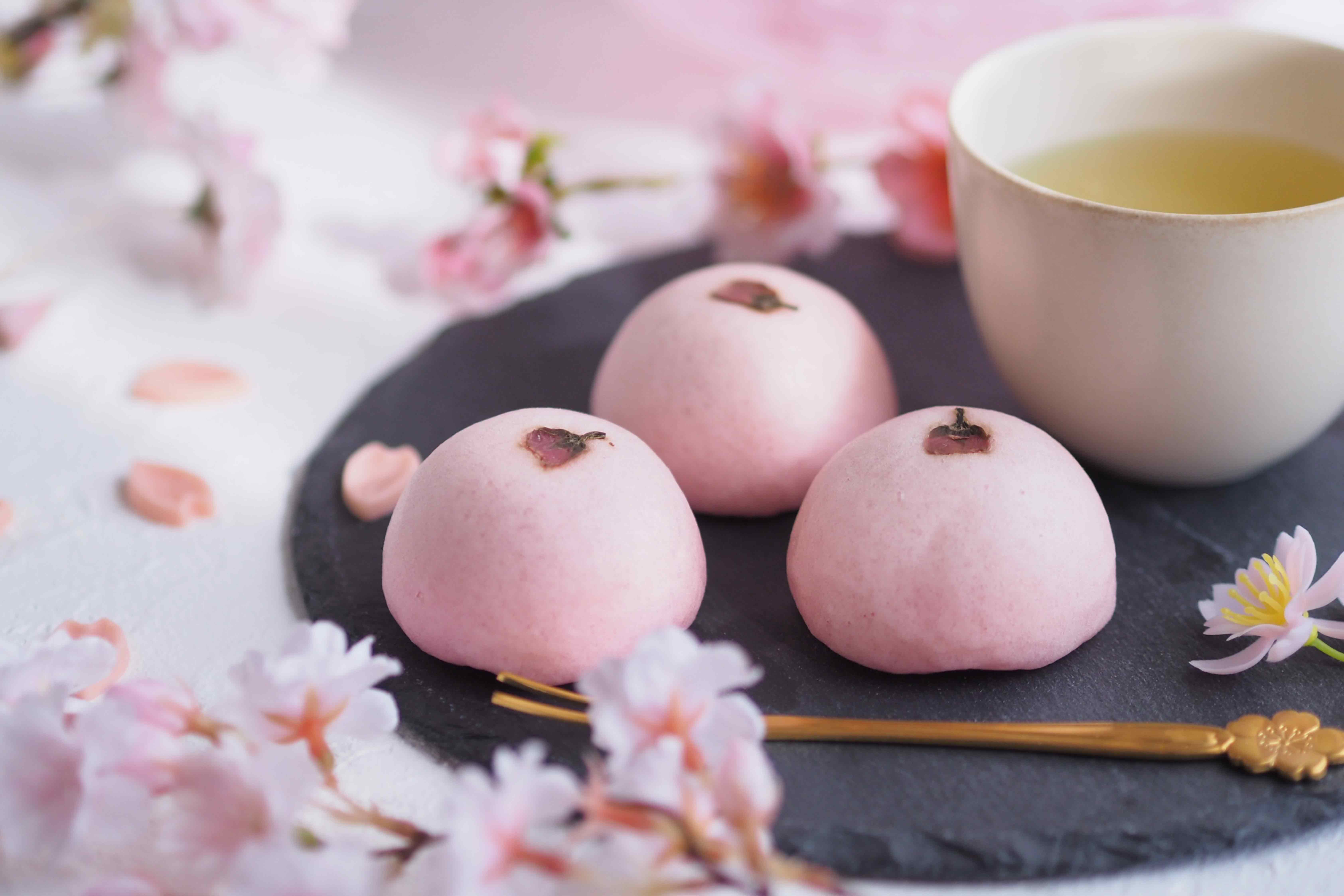“Manjyu is a dough made by kneading flour or other ingredients, wrapping An-paste in them, and then steaming, boiling, or baking them. This cooking method is also something that was introduced from the continent. It’s often known as “manto” or “paozu.” Around the 1200s and 1300s, Zen monks in Japan developed the study of “Shojin cuisine”. It is said that this “Manjyu” was one of the dishes included in their research. Like “Yokan” or others, it was not originally introduced as a sweet. Seasoned meat and vegetables were used as the An-paste ingredients. Later, it was made with sweet An-paste made from red beans and other ingredients. This simple cooking method, wrapping ingredients in a dough made of grain flour and heating it… Surprisingly, in Japan, it did not come to be used as a major cooking method very quickly. At that time, rice or grains cooked or boiled as a soup was already widely eaten. It seems that it had not become widely known enough to replace the cooking methods. It was also during the Edo period that it became widely known to the general public. The reason for this would be that it had become relatively easy for the general public to enjoy kind of sweets. As a result of various improvements in dough, An-paste ingredients, and cooking methods all over Japan, “Manjyu” has become a representative of Wa-sweets. Well, there are so many kinds of “Manjyu” that you can try different kinds of them, wherever you visit in Japan. It is a standard souvenir.

As a matter of fact, many of today’s “Manjyu” sweets are also very much influenced by Western food culture. The ingredients used for the dough and An-paste, as well as the cooking methods, are very much influenced. In the Edo period, when “Manjyu” was first known as Japanese sweets, some western sweets had already been introduced. Therefore, it is true that the developments of “Manjyu” was very much influenced by Western food culture from the beginning. Of course, this was even more so after the Meiji and Taisho eras. “Manjyu” is known as a representative of Wa-sweets, but it was created in modern Japan, right? Since it is a confectionery that has developed through such a background, the definition of this “Manjyu” sweet in Japan is very vague nowadays. If the dough is made from some kind of grain flour and the An-paste is wrapped in the dough, that of all can be regarded as a “Manjyu” sweet. The dough doesn’t have to be like steamed bread or dumpling-like in texture. Even if it’s like pie dough or crepe dough, you can consider it some kind of “Manjyu” sweets. Whether Japanese or Western style, they are all “Manjyu” sweets. You can name it “○○ Manjyu” if you want. Still, why is it that this “Manju” is regarded as one of the most representative Wa-sweets? This is probably because all of them are created with a fine combination of various overseas food cultures. By doing so, all of them will be very precisely adapted to the various tastes of Japanese people.
We hope you will try out the many many many different kinds of Japanese “Manjyu” sweets.




